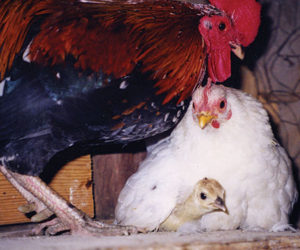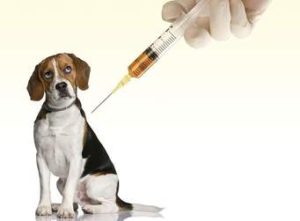The New York Times recently ran an article by James Gorman on the status of animals in universities across the United States.
Historically, academia relegated animals to the province of science. Rats were confined to psychology labs; cows to veterinary barns; monkeys to neuroscience labs; and preserved frogs to the dissecting tables of undergraduates. At the same time, the attention of liberal arts and social sciences was directed solely toward human interests.
No more. This spring Harvard is offering “Humans, Animals and Cyborgs,” while Dartmouth presents “Animals and Women in Western Literature” and New York University offers “Animals, People and Those in Between.”
These courses evidence a growing interest in animal studies. In fact, anything having to do with any connection between humans and animals in art, literature, sociology, anthropology, film, theater, philosophy, and religion is fair game for animal studies.
The Animals and Society Institute, itself only six years old, lists more than 100 animal studies courses in American universities. Institutes, book series and conferences are proliferating as formal academic programs emerge.
Wesleyan University, with the Animals and Society Institute, began a summer fellowship program this year. Michigan State now allows doctoral and master’s students in different fields to concentrate their work in animal studies. At least two institutions offer undergraduate majors, and New York University is allowing undergraduates to minor in animal studies.
Scholars never actually ignored animals. Thinkers and writers of all ages grappled with human/animal issues and the treatment of animals. However, the current burst of interest is unprecedented.
Jane Desmond of the University of Illinois, a cultural anthropologist, says public sensitivities are largely responsible for all the animal attention.
The trend may be traced back to Jane Goodall, who first showed us the social and emotional side of chimpanzees in a way we could not ignore. Most recently the popular YouTube video of a New Caledonian crow bending a wire into a tool to fish food out of a container caused academics to wonder how old a child would have to be to figure that out.
The most direct influence may have come from philosophy. Peter Singer’s 1975 book “Animal Liberation” was a landmark in arguing against killing, eating and experimenting on animals. He questioned how humans could justify causing animals pain.
Lori Gruen, head of philosophy and coordinator of the summer fellowship program in animal studies at Wesleyan, said, “Thirty years ago animals were at the margins of philosophical discussions; now animals are in the center of ethical discussion.”
Another strain of philosophy, exemplified by the French writer Jacques Derrida, has had an equally strong influence. He considered the way we think of animals, and why we distance ourselves from them. In “The Animal that Therefore I Am,” he discusses not only what he thinks of his cat, but what his cat thinks of him.
What animals think is something scholars are taking more seriously. Referring to academic programs that focused on disenfranchised populations like women or African-Americans, Dr. Weil of Wesleyan said, “Unlike (those populations, animals) can’t speak or write in language the academy recognizes.” This communication deficit lent itself to academics raising moral arguments on behalf of the animals.
The great variety of subjects, methods, interests and assumptions in animal studies raises serious questions about how it all hangs together. Law schools have courses in animals and the law; veterinary schools have courses about the human connection to animals; and some courses use animals in therapy as part of animal studies.
None of this diversity diminishes the excitement in what’s going on, although there are some academics within the animal studies rubric who think the scholarly ferment has a long way to go before it can truly consider itself an academic field.
One thing the new interest in animal studies does not lack is energy. If you want to better understand what all the scholarly excitement is about visit your local shelter for your homework assignment and adopt a pet today.
 For six years I served as executive director of the Yavapai Humane Society (YHS) – located in Prescott, Arizona – home to the world’s oldest rodeo.
For six years I served as executive director of the Yavapai Humane Society (YHS) – located in Prescott, Arizona – home to the world’s oldest rodeo.

